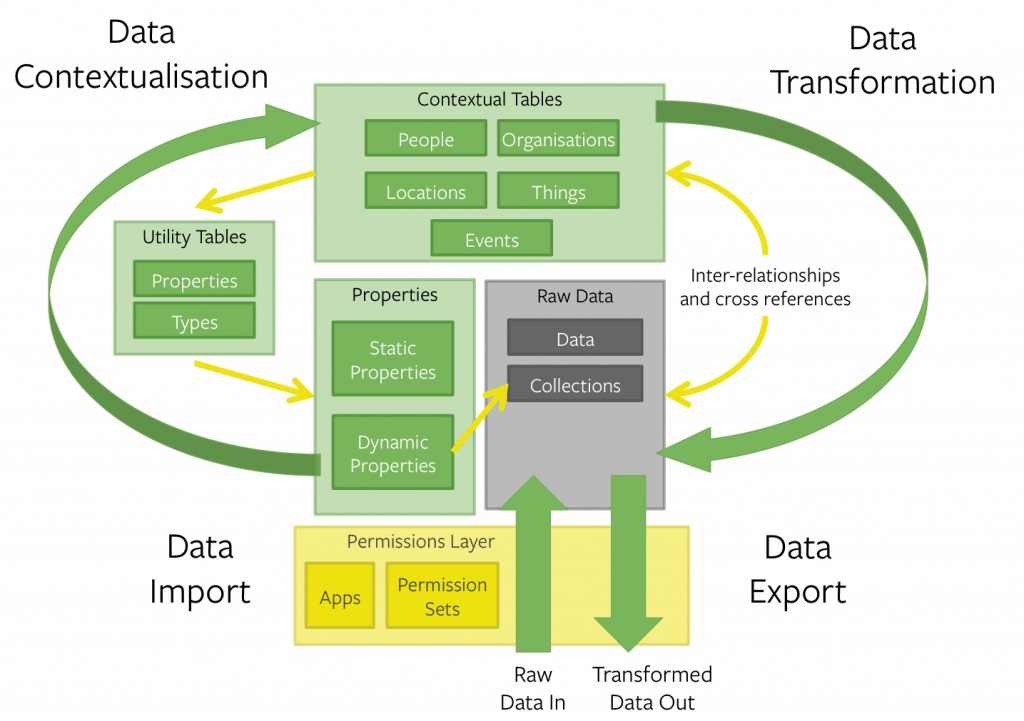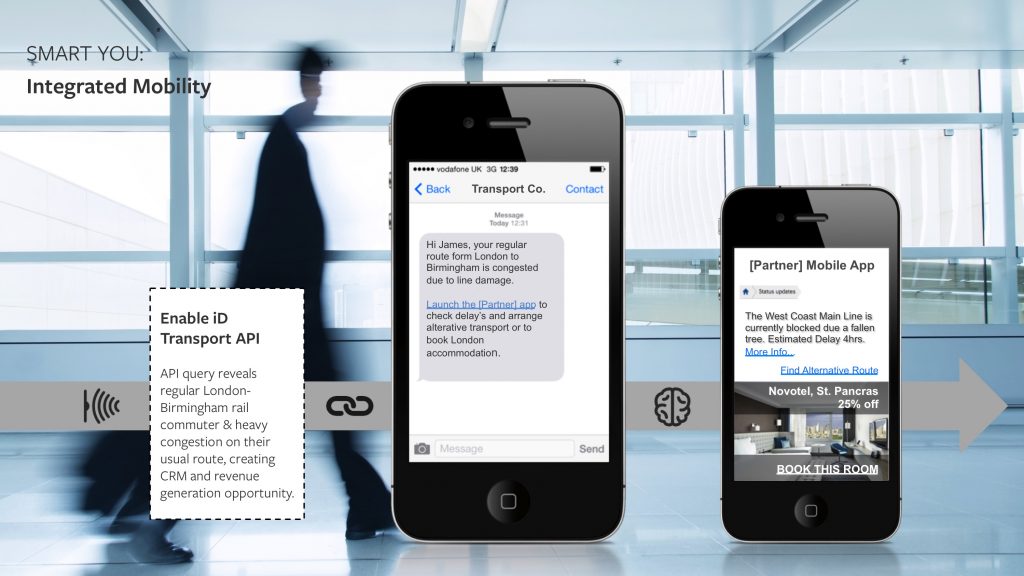The Rationale For HAT Enabled Personal Data Management
HAT Enabled Citizenship: The Hub-of-All-Things (HAT) is an open-source database schema designed to integrate IoT applications and data silos to help amplify human cognition. It compliments IoT protocols such as HyperCat, providing a standardised logical data model and easily integrated technology layer, which support the combination and secure management of product and personal data sets to create a Personal Data Store (PDS) for each individual. In addition the HAT is an intuitive decisioning engine. It transforms the explosion of information generated by Internet of Things devices, connected environments and so called ‘smart cities’, to help people become ‘smarter citizens’, extending our digital identity with automated recall, increased computation ability and contextualised communication preferences.
Dissolving Information Silos: Communication channels across local communities have become complex and fragmented. Websites and apps typically prioritise historic data and commercial offers over personal context. In parallel, the development of local services alongside national and international services has led to a plethora of ‘information silos’. For example, real-time rail network data is still disconnected from traffic congestion information. Notwithstanding the projected cost of congestion (£300Bn over 16 years), the current net loss to UK GDP caused by this disconnect is perhaps most evident on the faces of frustrated commuters. The Internet of Things is compounding this problem by creating yet more data silos. But accessing data and writing software to transform it into timely actionable insight is only half the problem.
Designing Interoperability: To deliver services that genuinely improve rather than add yet another layer of confusion to people’s lives, the solution must be a point of synthesis across several vertical markets and personal data sets. To successfully and securely address this, the Hub-of-All-Things shifts the commercial paradigm from market touchpoint to individual intent. It facilitates the combination of siloed IoT data with behavioural data and personal preferences for specific times of day or event types, such as work or leisure. Whilst the specific use-case may be transport, healthcare or energy management, the integration of demand-led food and beverage, entertainment and business services is key to harnessing the overall utility and value that smart environments can deliver.
Image: HAT Personal Database Architecture – giving individuals control over their data and how it is used by 3rd parties

Smart Citizenship: Our intention is to position ‘Smart Citizenship Through Integrated IoT’, as a differentiating factor for global cities. Each initiative we undertake aims to demonstrate this through the deployment of interoperable sector focused IoT hubs (Transport, Health, Energy etc.) connected by the Personal Data Stores of individuals that interact with them. The HAT element of each project provides a secure ‘gateway’ solution to interoperable personal data, delivering greater utility for citizens, advancing the role of local authorities and opening up new revenue streams. Whilst HAT enabled services leverage established enterprise solutions, Cisco technology for example, routing hardware (with exception of IoT sensors), connectivity and hosting form the backdrop ecosystem for smart citizenship, which leads instead with innovative service design layers built on top of the Internet of Things.
Capitalising On Devolution: The role of local authorities, enterprise partnerships and regional public transport delivery bodies is key to the Hub-of-All-Things’ region specific integration with service providers, increasing their value proposition with personalised local information. The HAT facilitates feeds of location specific data from centralised authorities and national organisations whilst also creating a vehicle for Local Enterprise Partnerships to engage local businesses. This underpins a ‘hyper-local’ vision. It provides the necessary interoperability to establish and refine operational and commercial structures for integration of local services in a way that compliments rather than over-complicates people’s lives.
E.g. Use Case, Transport – aggregated real-time data served based on individual preferences and journey context (click to enlarge)
Building In Continuous Improvement: By establishing and providing the computational architecture to maintain regional ‘laboratory environments’, the Hub-of-All-Things predicates a transitional model for public and private sector company collaboration, improving a multitude of existing services (e.g. knowledge transfer between patients, health and social care workers), products (e.g. pre-allocated parking and coffee served without queuing) and associated transactional processes (e.g. distributed revenues from affiliate linked transactions with both local and national businesses). The HATs utilisation of existing technologies and systems alongside personal data; IoT hardware at key transport interchanges, the workplace and in homes, established open data feeds, web and mobile technologies, means it can deliver increased utility in parallel with the ongoing diagnosis of additional user and system requirements. By building inherent real-time human-machine learning processes and intelligence into the fabric of our environment in this way, we are able to qualify and maximise the value of systems, devices and specific data sets, gaining better understanding of data lifecycles and network integration challenges with each new initiative.
Using the Hub-of-All-Things as a common layer to connect disparate Internet of Things deployments enables this integral research and development. It provides the framework to continuously inform sector specific IoT programmes, not only as discrete regional demonstrators but as catalysts for the organic realisation of smart citizenship based on the interconnected needs of our growing populations.


